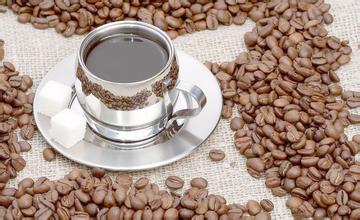Introduction of Costa Rican coffee producing areas with extremely hard beans above 1500 meters above sea level
The volcanic soils of the region are fertile and well drained, making it the first country in Central America to grow coffee and bananas for commercial value. Coffee and bananas are the country's main exports. Coffee was introduced to Costa Rica from Cuba in 1729, and today its coffee industry is one of the most well-organized in the world, producing up to 1700 kilograms per hectare. Costa Rica has a population of 3.5 million, but coffee trees number 400 million, and coffee exports account for 25% of the country's total exports. Costa Rica also benefits from the Turrialba of the Central American Agricultural Research Institute (IAAC) in Tarazu, an important international research centre. Super hard beans High-quality Costa Rican coffee is called "super hard beans" and can grow at altitudes above 1500 meters. Altitude has always been a problem for coffee growers. Coffee beans are better at higher altitudes, not only because higher altitudes increase the acidity of coffee beans and thus enhance flavor, but also because lower night temperatures at higher altitudes cause trees to grow slowly, thus making coffee beans more flavorful. In addition, due to the high altitude drop caused by sufficient rainfall, the growth of coffee trees is also very favorable. However, while there are many advantages to growing coffee at higher altitudes, the additional transportation costs associated with it must be taken into account, which may well make coffee production unprofitable. Costa Rican coffee has adopted new technologies to increase efficiency, including the use of "electric eyes" to select beans and identify beans of irregular size.
In Costa Rica, coffee berries are unloaded from cattle carts. Tarasu, south of San José, is one of the country's most prized coffee plantations. La Minita Tarrazu coffee is locally famous but produced in limited quantities, about 72600 kilograms a year, on land called La Minita, owned by nearly three generations of the McAlpine family in Britain. In fact, the land produces more than 450 tons of coffee per year. But Tara Sulama's coffee cultivation did not
Costa Rica uses artificial fertilizers or pesticides, and its harvesting and selection are done entirely by hand, in order to avoid some of the damage caused to coffee beans by air spray selection. Other varieties worth mentioning include Juan Vinas (PR), H.Tournon, Windmill (SHB), Montebello and Santa Rosa. Fine coffee is grown in Geredia and the Central Valley. Another striking coffee is Sarchi (one of five towns that represent Costa Rica's "coffee route"), which grows on the slopes of Poas Volcano, 53 kilometers from San Jose. Saatchi was founded in 1949 and has 30770 hectares of land to grow sugar cane and coffee. The area is also known for its handicrafts, attracting tourists from all over the world.

Important Notice :
前街咖啡 FrontStreet Coffee has moved to new addredd:
FrontStreet Coffee Address: 315,Donghua East Road,GuangZhou
Tel:020 38364473
- Prev

Colombia coffee beans are often described as having a silky texture
Colombia coffee is often described as having a silky smooth taste, and of all coffees, it has the best balance, soft, smooth taste and ready to drink. Xiao Bian short comment: I remember Xiao Bian once sent a post asking which brand of instant coffee everyone likes. The answer given by a netizen is very classic: Colombia is the first choice, but there are relatively few places to sell;
- Next

The coffee-producing area of El Salvador, northwest of Central America and bordering the Pacific Ocean to the south, introduces the Iza of Sonsonate province.
In El Salvador, the coffee beans rich in the Kuskabapa region are the best, slightly lighter, fragrant, pure and slightly sour. Like Guatemala and Costa Rica, coffee in El Salvador is graded according to altitude, and the higher the altitude, the better the coffee. The best brand is Pip, whose quality has been recognized by the American Organic Certification Society. In addition
Related
- Does Rose Summer choose Blue, Green or Red? Detailed explanation of Rose Summer Coffee plots and Classification in Panamanian Jade Manor
- What is the difference between the origin, producing area, processing plant, cooperative and manor of coffee beans?
- How fine does the espresso powder fit? how to grind the espresso?
- Sca coffee roasting degree color card coffee roasting degree 8 roasting color values what do you mean?
- The practice of lattes: how to make lattes at home
- Introduction to Indonesian Fine Coffee beans-- Java Coffee producing area of Indonesian Arabica Coffee
- How much will the flavor of light and medium roasted rose summer be expressed? What baking level is rose summer suitable for?
- Introduction to the characteristics of washing, sun-drying or wet-planing coffee commonly used in Mantenin, Indonesia
- Price characteristics of Arabica Coffee Bean Starbucks introduction to Manning Coffee Bean Taste producing area Variety Manor
- What is the authentic Yega flavor? What are the flavor characteristics of the really excellent Yejasuffi coffee beans?

